-
Posts
1,095 -
Joined
-
Last visited
Content Type
Profiles
Forums
Articles
Gallery
Downloads
Events
Posts posted by Stormcrow
-
-
Thank y'all!
LibrariaNPC - They're Turk's head knots. I'll dig up a link to the animation that helped me learn how to do them.
Some more fun pics from the show:
About fifteen minutes before the end of the show, Pat Pruitt was talking with us while examining a Woodsman 'hawk and all of a sudden we noticed blood.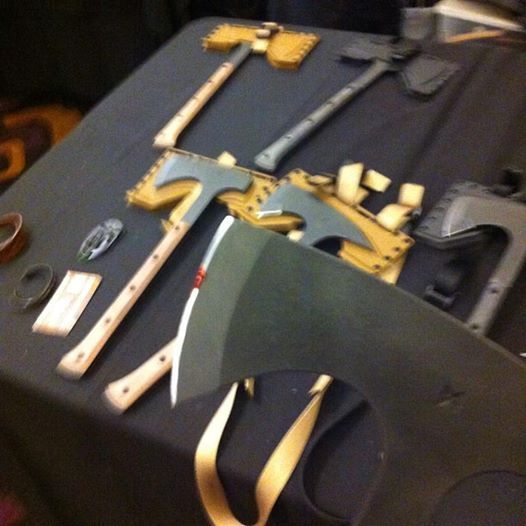
Fortunately, my wife is a nurse, and with the help of a first aid kit that the Broadwells had prudently brought along, managed to get him patched up.
DJ Urbanovsky of American Kami with his awesome S6 sword made from S7 steel: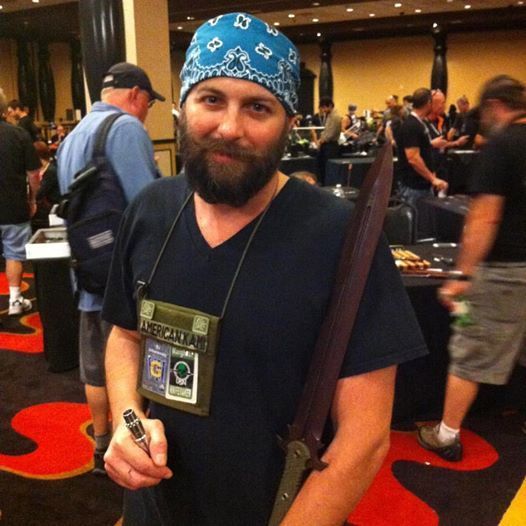
Ben Tendick of BRT Bladeworks with my waki/tanto daisho: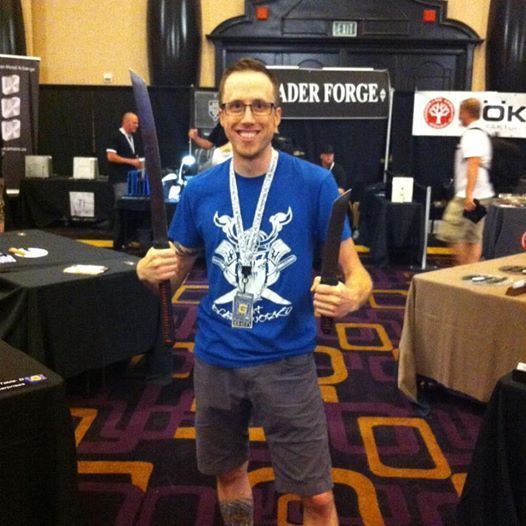
Me with one of Kiku Matsuda's big blades (loved the handle on this thing):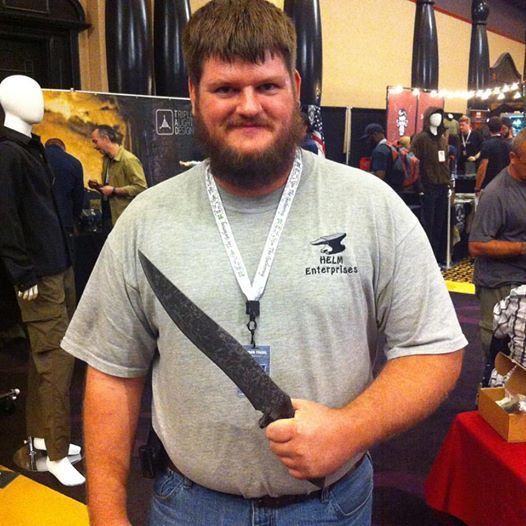
David Brown of Buy Brown Industries with my 18 1/4" bladed bush sword and a 15" Wrecker 'hawk:
David has huge hands. I wear a size 14 1/2 ring. This is one of his skull rings rattling around my wedding band:
Here we go:
http://www.ropeworks.biz/archive/Aturkhed.html
It took me probably thirty tries to get the first one while watching the animation over and over again, and I probably messed that one up too. But I have no natural skill with knots and braiding, so if you do it should be easier.
-
On the trek between San Antonio and Las Vegas, I stopped at a rest area in central Arizona to get some photos of the forged blades I took to the Gathering. And now I'm finally posting the pics.

This cleaver was a commission to be picked up at the show, but it came back with me to get some Kydex pants. Blade is approximately 14 1/2" long, forged from 80CrV2, integral socket handle, retina-searing neon lime paracord wrap.
Next up a couple of long-handled cleavers in 5160 and more retina-searing citrus paracord. Both the blades and handles are around 10" long.A big bush sword with an 18 1/4" blade, fully sharpened top edge, in 5160 and tan paracord.
And a shot of it in hand.
And finally, a couple that I felt was an interesting project, a long-handled wakizashi/short-bladed katana and tanto daisho, forged from 5160 with retina-searing neon orange paracord underlays. The waki's blade is about 18" and the handle is about 12", while the tanto's blade is about 9".
The wakizashi straightened a fair amount in the quench, something I expected and compensated for with extra curvature beforehand. I documented it this time. At the point where the blade reaches the edge of the anvil face, it has dropped about 1/4".
And I had a stack of 15" Woodsman and Wrecker tomahawks. I so appreciate my wife's help at the show!
-
Search for "bronze sword" on Youtube and you can easily find some pretty good videos testing out bronze swords. They definitely bend more easily than steel, but their edges seem to hold up surprisingly well on the ones I've seen.
I tried to post a link, but the forum seems to be increasingly buggy and did not play nicely.
-
Hoods Woods Volume 9 with Tai Goo and Tim Lively is the number one resource I recommend for people starting out. The only electricity used is brief usage of a stone-wheeled bench grinder and a hand drill. Knifemaking Unplugged with Tim and Marian Lively goes a little more in-depth, and Tai has two videos that focus on muscle-powered forging and knife making.
-
I'm working on a chunky quasi-wakizashi for the USN Gathering coming up with alarming rapidity, and thought I would document something interesting that happens when I do a quasi-Japanese blade. My apologies for the quality of the cell phone pictures.
One of the factors to take into consideration when making a Japanese-style blade is the sori, or amount of curvature that is formed during heat treatment. In a traditional blade using tamahagane steel in a water quench, the blade is straight when it come out of the fire and curves first down toward the edge then up toward the spine. It can be very stressful and there's a high rate of traditional blades tearing themselves apart in the quench. With an oil quench, a blade tends to get negative sori, curving toward the edge.
So, with this 5160 wakizashi, I gave it more curvature than I wanted and let the negative sori straighten it. The soapstone mark on the anvil shows where the spine was prior to the quench. I've never had a blade crack from sori in a canola quench.
While at the base of the blade near the blade/tang transition there has been almost no change, about 2/3 of the way down it has moved about a 1/4". It seems like this happens by far the most with the quasi-Japanese blades I do. It's like they know...
 I've gotten pretty good at gauging how much extra curvature to have to get the blade to straighten up to where I want it, but I don't do too many in this style.
I've gotten pretty good at gauging how much extra curvature to have to get the blade to straighten up to where I want it, but I don't do too many in this style. -
How big a ram are you planning on running? A trailer spring is going to be pretty light duty. I'd go with at least a two ton truck spring.
-
Thank you! I really think that's a good way to put it.

-
This one was forged for the Blade Show, but came back to Texas with me. It ended up going to a customer who has bad luck with poisonous snakes, and when he saw pictures said it would be perfect for the inevitable ophidian encounters whenever he is outdoors.
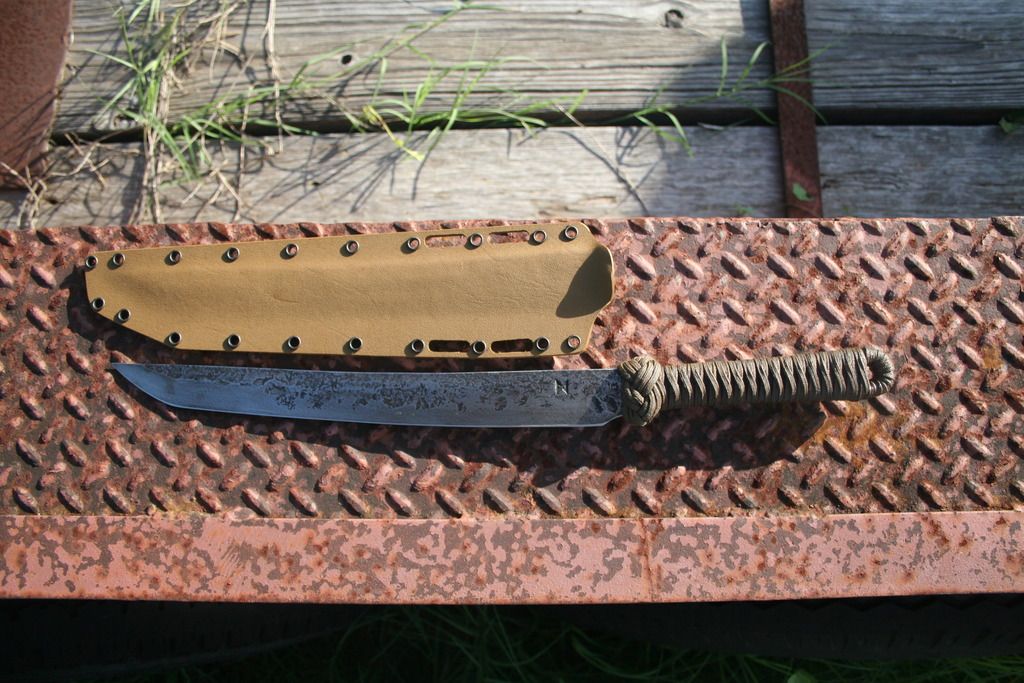
It's forged from 5160, with a blade 12" long. The handle is two layers of paracord over leather, all impregnated with marine epoxy.
The Kydex sheath has slots for straps, allowing a quasi-traditional horizontal carry on a belt.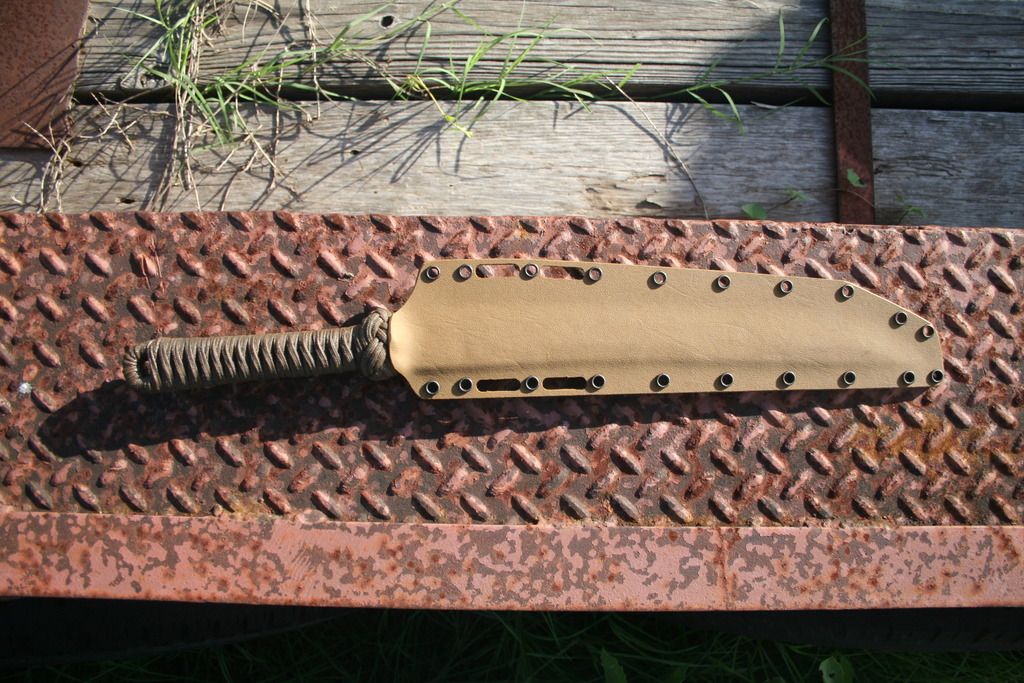
I also shot a little cutting video before it left the shop. -
5160 is a good tough steel that holds an edge pretty well, but for a kitchen knife that needs to hold a fine edge, I'd go for something with more carbon. Might take a look at 80CrV2. Similar heat treatment to 5160, but has .2% more carbon.
-
That's pretty wild! In a good way.

-
Raymond Richard made a number of rebar knives that gave at least decent performance. Most of them were done over 10 years ago, so finding pictures is limited. He was specifically using American-made grade 60 rebar, which apparently (according to what he was told) meant .6% carbon. Do a Google search for his name and "rebar knives" and you can at least turn up what he said about them, if only a few pictures.
-
Tai and Tim are the two makers who have had the biggest influence on my work, though you won't confuse anything I make with theirs.

Another fellow to look at is Rik Palm, who has done a number of steel-bladed Otzi knives. His sheaths for them are finger woven fibers like the original. http://www.rikpalmcustomknives.com/bladegallery/otzi.html
I like how yours has turned out. Looking forward to the finished up sheath and all.
-
-
-
That's an awesome little knife! To me, one of the coolest factors is the texture you got out of the wood. Is that with just a powered brush wheel?
-
Updated sheath making video, using standardized tooling.
http://www.youtube.com/watch?v=ukpHR_ep0RQ -
Sure looks better than my first real knife. Good job!
-
I've tried off and on for several days to add it in, using two different browsers. Something about the forum is messing up. Doesn't seem to just be me, too.
-
-
-
My donation blade for Knife Rights' Ultimate Steel fundraiser came a bit late this year, but I got it to them at the Blade Show. I was not able to get a good photo before handing it over.
xxxxxxxx.xxx
I decided that since Knife Rights aggressively defends the Second Amendment, that one of my Aggression knives would be appropriate. This one is a 12" blade forged from 80CrV2 steel, with marine epoxy-impregnated paracord over leather for the wrap. Usually these are double edged, but, ironically, I made this one have a false edge due to restrictions in different states being different.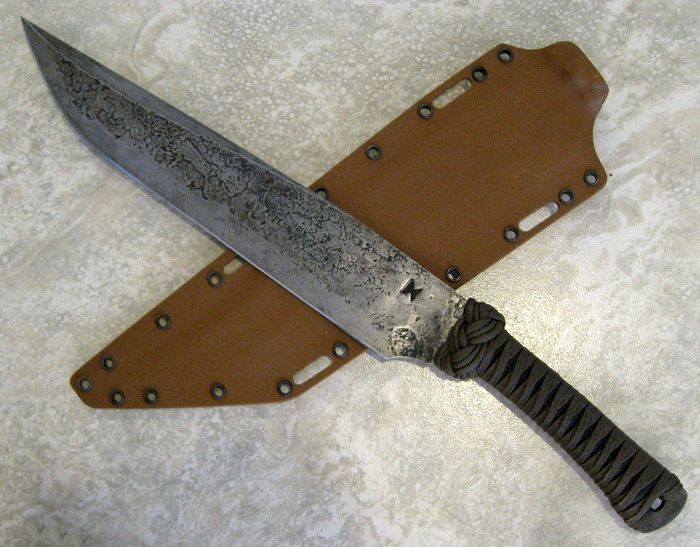
Knife Rights has been working in Texas for the last several legislative sessions, working this year for a preemption law that would prevent local jurisdictions from having stricter regulations on knives than the states (passed and signed), and a law that would have eliminated restrictions on knives (pulled from getting voted on at the last minute for political vindictiveness having nothing to do with the bill itself). They will be back next session to yet again work for the latter.
And I will have another donation piece to support their efforts then, too.
-
I finally got video edited and uploaded that was shot back in the cooler weather. Here is a look at the grinding and heat treatment on my tactical 'hawks. No forging content, but the processes might be of interest, especially the heat treatment.
http://www.youtube.com/watch?v=66j1xxpkm1M
A look at handles is next, and I need to shoot an updated look at making sheaths. -
'Nuff said.
-
Simple, but very graceful. I especially like the flow of lines on the top one.

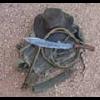
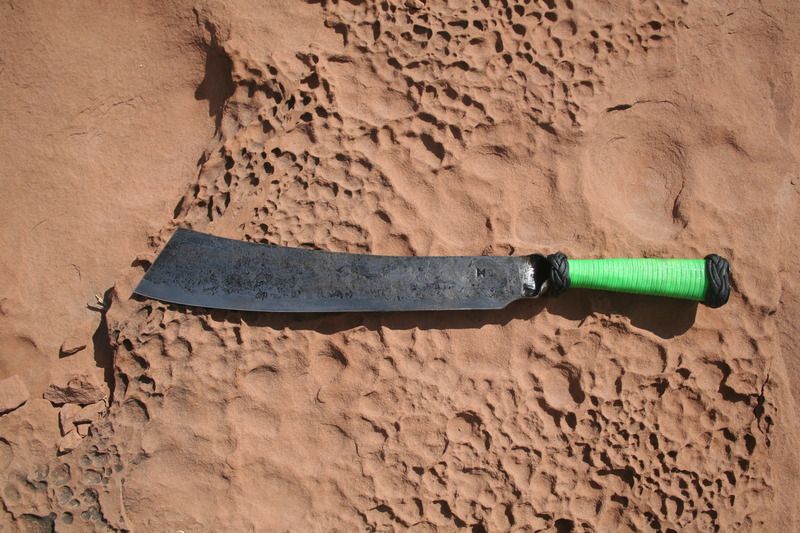
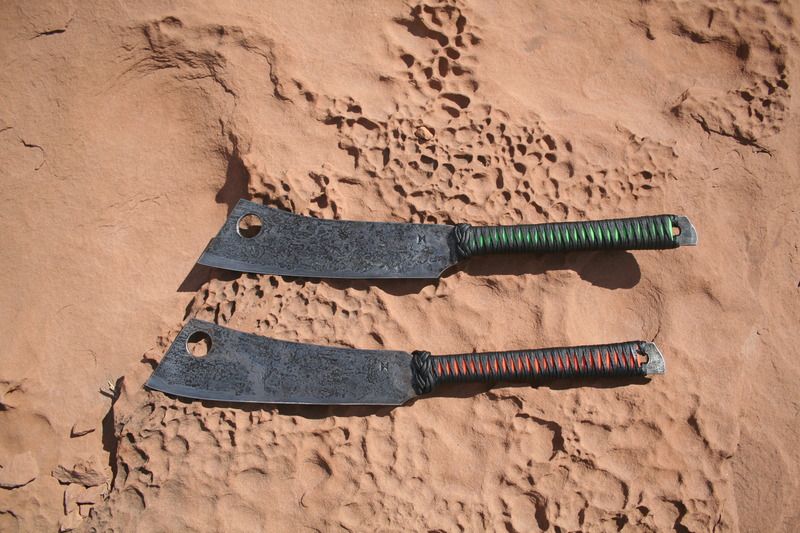
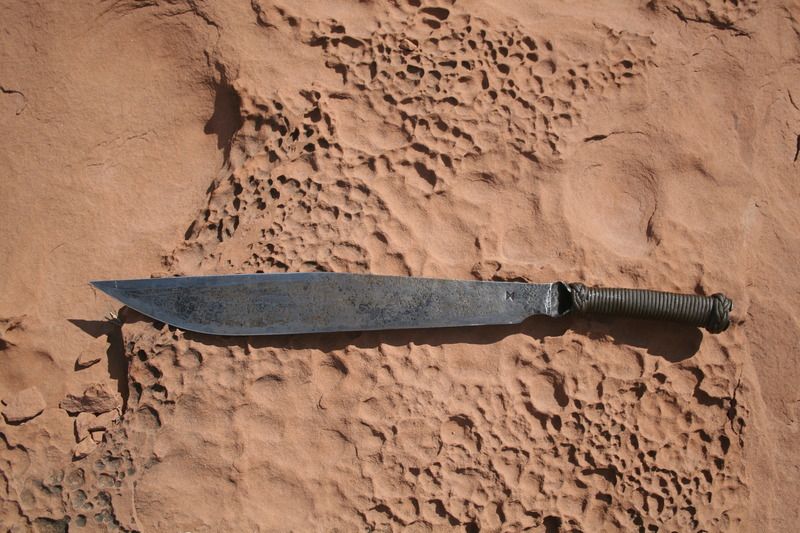
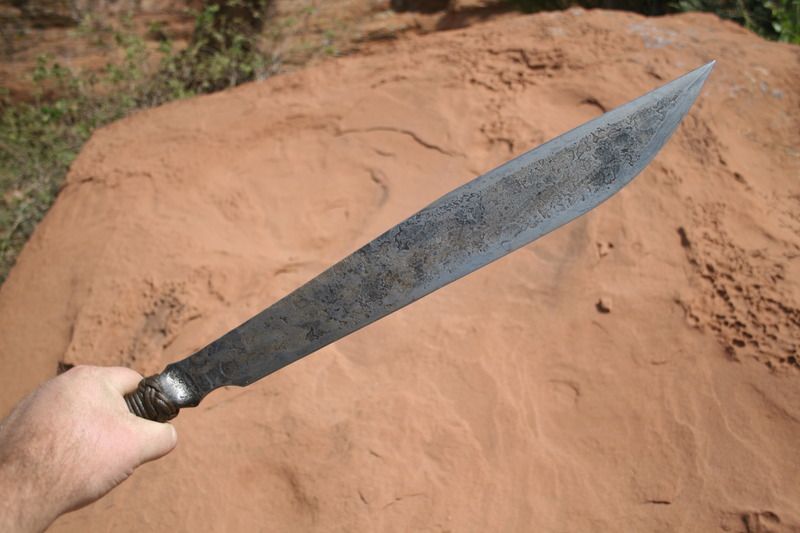
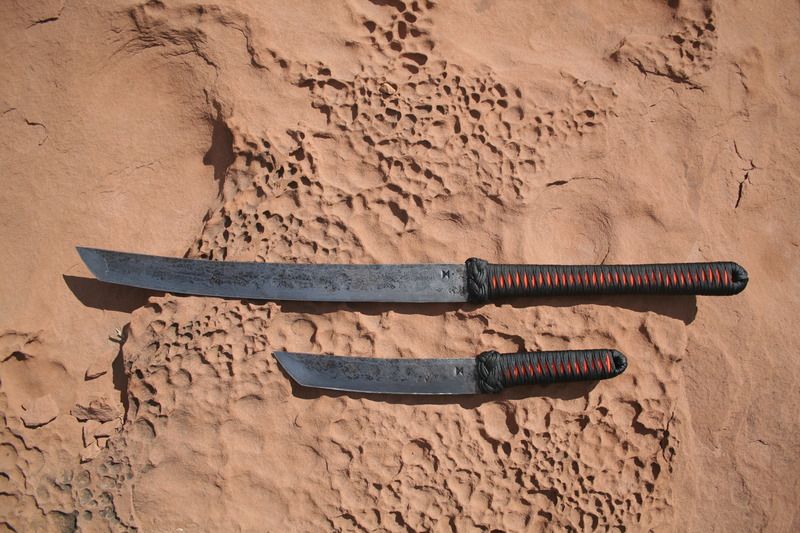
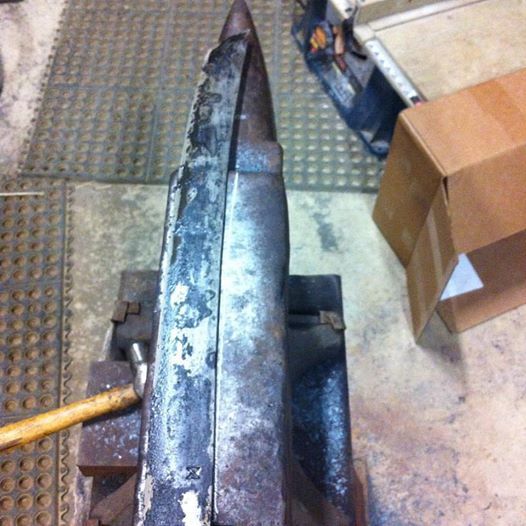
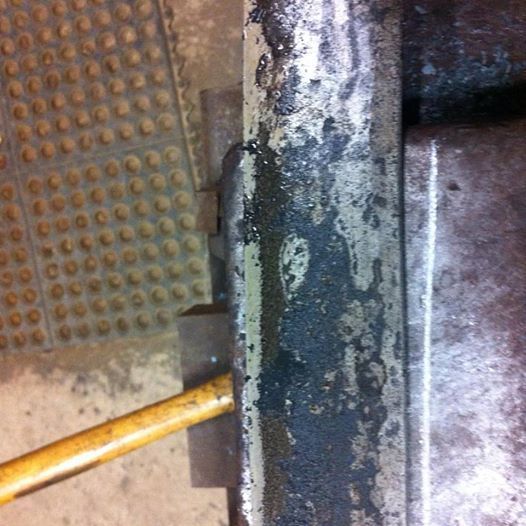
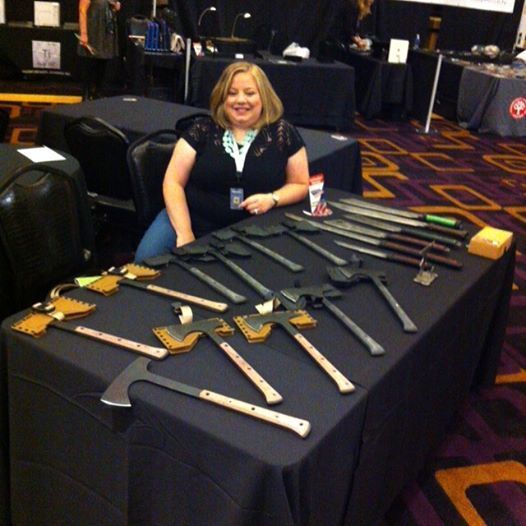
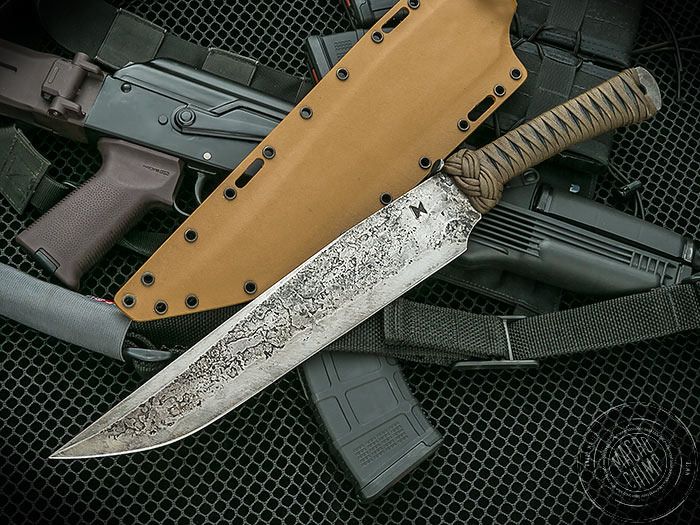



Material 1" thick question
in Axes, Hatchets, Hawks, Choppers, etc
Posted
1" can spread out into a very respectable blade width. Certainly a better starting point in size and alloy than the railroad spikes that a lot of folks seem to want to use.
I have forged 'hawks from 1" square 4140, and it is a good size for such.